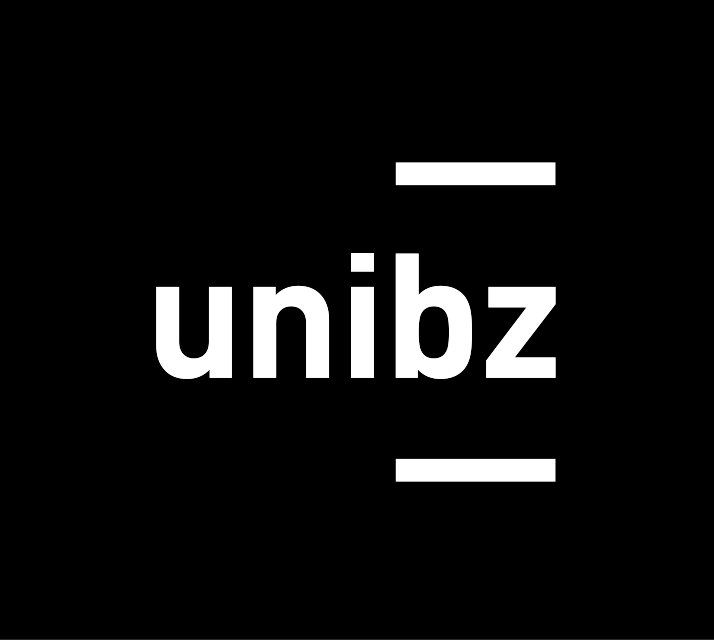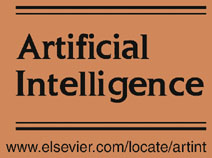Accepted Papers
Long Papers:
(Linked PDFs are not always final versions)
1) Aaron Hertzmann –
Toward Modeling Creative Processes for Algorithmic Painting (Paper)
2) Alex Calderwood, Noah Wardrip-Fruin and Michael Mateas –
Spinning Coherent Interactive Fiction through Foundation Model Prompts (Paper)
3) Alison Pease, Maya Ackerman, Nic Pease and Bernadette McFadden –
A Roadmap for Therapeutic Computational Creativity (Paper)
4) Alla Gubenko, Todd Lubart and Claude Houssemand –
From social robots to creative humans and back (Paper)
5) Benjamin Fele, Senja Pollak and Martin Žnidaršič –
Evaluation of Curriculum Learning Algorithms using Computational Creativity Inspired Metrics (Paper)
6) Berkeley Andrus and Nancy Fulda –
A Data-Driven Architecture for Social Behavior in Creator Networks (Paper)
7) Brad Spendlove and Dan Ventura –
Competitive Language Games as Creative Tasks with Well-Defined Goals (Paper)
8) Caterina Moruzzi –
The (Artificial) Physicality of Creativity: How Embodiment Influences Perceptions of Creativity (Paper)
9) Daniel Brown and Anna Jordanous –
Is style reproduction a computational creativity task? (Paper)
10) Daniel Brown and Dan Ventura –
Ethics, Aesthetics and Computational creativity (Paper)
11) Divyansh Jha, Kai Yi, Ivan Skorokhodov and Mohamed Elhoseiny –
Creative Walk Adversarial Networks: Novel Art Generation with Probabilistic Random Walk Deviation from Style Norms (Paper)
12) Guendalina Righetti, Oliver Kutz, Daniele Porello and Nicolas Troquard –
A Game of Essence and Serendipity: Superb Owls vs. Cooking-Woodpeckers (Paper)
13) Hajime Murai, Shuuhei Toyosawa, Takayuki Shiratori, Takumi Yoshida, Shougo Nakamura, Yuuri Saito, Kazuki Ishikawa, Sakura Nemoto, Junya Iwasaki, Shoki Ohta, Arisa Ohba and Takaki Fukumoto –
Extraction of Typical Story Plot Patterns from Genres within Japanese Popular Entertainment Works (Paper)
14) Lukas Wertz and Jonas Kuhn –
Adapting transformer language models for application incomputational creativity: Generating German theater plays with varied topics (Paper)
15) Marvin Zammit, Antonios Liapis and Georgios Yannakakis –
Seeding Diversity into AI Art (Paper)
16) Patrick Chieppe, Penny Sweetser and Eryn Newman –
Bayesian Modelling of the Well-Made Surprise (Paper)
17) Paul Bodily and Dan Ventura –
Open Computational Creativity Problems in Computational Theory (Paper)
18) Piotr Sawicki, Marek Grzes, Anna Jordanous, Daniel Brown and Max Peeperkorn –
Training GPT-2 to represent two Romantic-era authors: challenges, evaluations and pitfalls (Paper)
19) Tony Veale –
Two-Fisted Comics Generation: Comics as a Medium and as a Representation for Creative Meanings (Paper)
20) Vasanth Sarathy and Matthias Scheutz –
BIPLEX: Creative Problem-Solving by Planning for Experimentation (Paper)
21) Xiaomeng Ye, Ziwei Zhao, David Leake and David Crandall –
Generation and Evaluation of Creative Images from Limited Data: A Class-to-Class VAE Approach (Paper)
22) Yingtao Tian, Marco Cuturi and David Ha –
Simultaneous Multiple-Prompt Guided Generation Using Differentiable Optimal Transport (Paper)
Short Papers:
1)Jessica Bielski, Burak Mete, Viktor Eisenstadt, Christoph Langenhan, Frank Petzold and Klaus-Dieter Althoff – Chasing the White Rabbit – A case study of predicting design phases of architects by training a deep neural network with sketch recognition through a digital drawing board (Paper)
2)Amy Smith and Simon Colton – The @artbhot Text-To-Image Twitterbot (Paper)
3)Joe Toplyn – Witscript 2: A System for Generating Improvised Jokes Without Wordplay (Paper)
4)Kana Maruyama and Michael Spranger – Interpretable Relational Representations for Food Ingredient Recommendation Systems (Paper)
5)Francisco Ibarrola, Oliver Bown and Kazjon Grace – Towards Co-Creative Drawing Based on Contrastive Language-Image Models (Paper)
6)Evana Gizzi, Wo-Wei Lin, Mateo Guaman Castro, Ethan Harvey and Jivko Sinapov – Toward Life-Long Creative Problem Solving: Using World Models for Increased Performance in Novelty Resolution (Paper)
7)Piotr Mirowski, Dylan Banarse, Mateusz Malinowski, Simon Osindero and Chrisantha Fernando – CLIP-CLOP: CLIP-Guided Collage and Photomontage (Paper)
8)Roisin Loughran – Bias and Creativity (Paper)
9)Janita Aamir and Paul Bodily – Implementation of an Anti-Plagiarism Constraint Model for Sequence Generation Systems (Paper)
10)Mika Hämäläinen, Khalid Alnajjar and Thierry Poibeau – Modern French Poetry Generation with RoBERTa and GPT-2 (Paper)
11)Alessandro Valitutti – The Word-Weaving Clock: Time Constraints in Word Associations (Paper)
12)Diarmuid O’Donoghue – Novelty Assurance by a Cognitively Inspired Analogy Approach to Uncover Hidden Similarity (Paper)
13)Anna Kantosalo, Simo Linkola and Tomi Männistö – How to Report the Contributions of a CC System? (Meta-perspective) (Paper)
14)Michele Boggia, Sardana Ivanova, Anna Kantosalo, Simo Linkola and Hannu Toivonen – Casual Poetry Creators: A Design Pattern and Internal Evaluation Measures (Paper)
15)Max Peeperkorn, Rob Saunders, Oliver Bown and Anna Jordanous – Mechanising Conceptual Spaces using Variational Autoencoders (Paper)
16)Ziv Epstein, Hope Schroeder and Dava Newman – When happy accidents foster creativity: Bringing collaborative speculation to life with generative AI (Paper)
17)Piera Riccio, Jose Luis Oliver, Francisco Escolano and Nuria Oliver – Algorithmic Censorship of Art: A Proposed Research Agenda (Paper)
18)Michele Boggia, Sardana Ivanova, Anna Kantosalo, Simo Linkola and Hannu Toivonen – One Line at a Time — Generation and Internal Evaluation of Interactive Poetry (Paper)
19) Julia Siekiera, Marius Köppel, Edwin Simpson, Kevin Stowe, Iryna Gurevych and Stefan Kramer – Ranking Creative Language Characteristics in Small Data Scenarios (Paper)
20)Pablo Gervás – Generating Plotlines about Attempting to Avert Disasters (Paper)
21)Skylar Gordon, Robert Mahari, Manaswi Mishra and Ziv Epstein – Co-creation and ownership for AI radio (Paper)
22)Anna Jordanous – Should we pursue SOTA in Computational Creativity? (Paper)
23)Sara Cardinale and Simon Colton – Neo-Riemannian Theory for Generative Film and Videogame Music (Paper)
24)Berker Banar and Simon Colton – Connecting Audio and Graphic Score Using Self-supervised Representation Learning – A Case Study with Gyorgy Ligeti’s Artikulation (Paper)
25)Claire Stevenson, Iris Smal, Raoul Grasman, Matthijs Baas and Han van der Maas – Putting GPT-3’s Creativity to the (Alternative Uses) Test (Paper)
26)Renaud Bougueng Tchemeube, Jeffrey Ens and Philippe Pasquier – Calliope: An Online Generative Music System for Symbolic Multi-Track Composition (Paper)
27)Alayt Issak and Lav Varshney – Artistic Autonomy in AI Art (Paper)
28)Mei Si – Word Embedding for Analogy Making (Paper)
29)Kieran Maraj and Doug Van Nort – Intergestura: a gestural agent based on sonic meditation practices (Paper)
30)Emmanouil Vermisso – Semantic AI models for guiding ideation in architectural design courses (Paper)
31)Shin Sano and Seiji Yamada – D-Graph: AI-Assisted Design Concept Exploration Graph (Paper)
32)Nancy Fulda and Chaz Gundry – Conversational AI as Improvisational Co-Creation – A Dialogic Perspect (Paper)
33)Guanhong Li, Xiaoyun Guo and Takashi Hashimoto – Noise as a Key Factor in Realizing a Creative Society (Paper)




